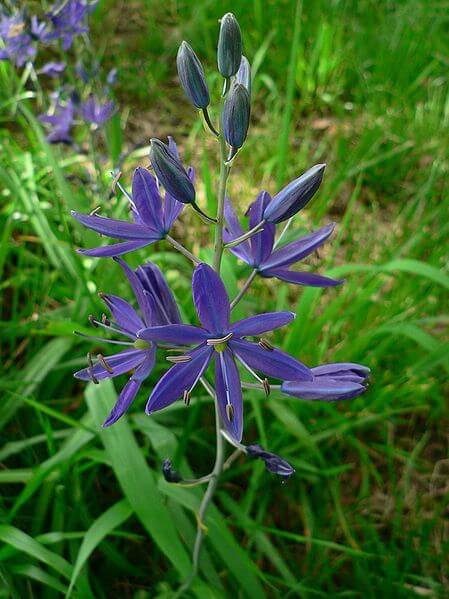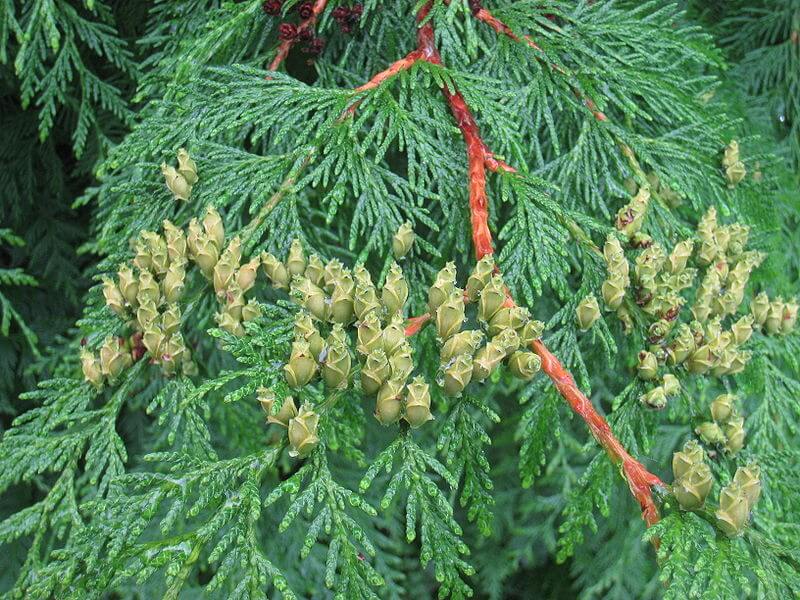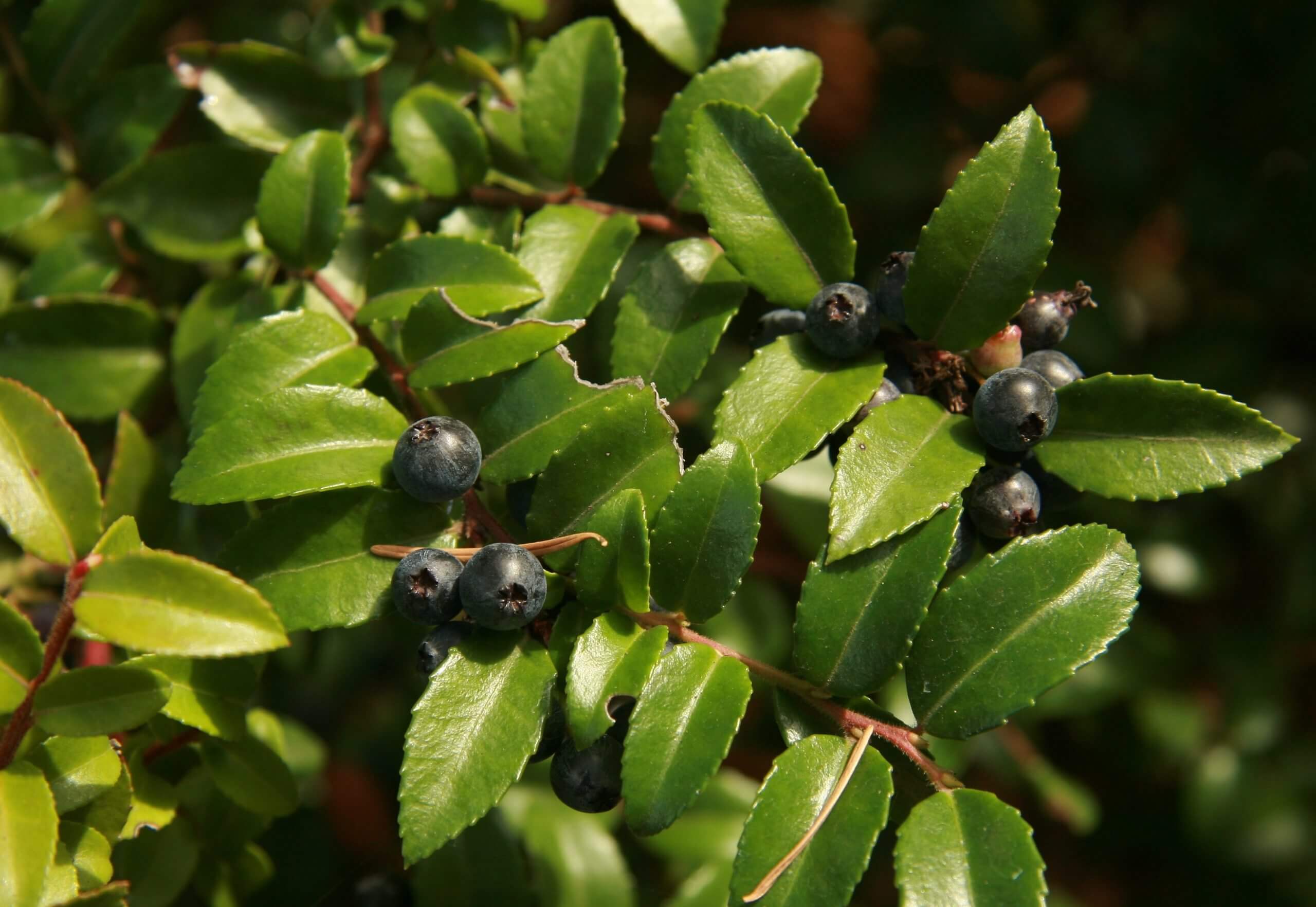
History seems to indicate that Native Americans living on the west side of the Cascades in Oregon and Washington did not rely heavily on a system of agriculture. They simply did not need to. With the ocean, rivers, streams and forests, there was an abundance of food and they generally did not ‘garden’. There is a folk tale that has been passed down through many generations saying that at certain times of the year, the streams had so much salmon in them that one could walk across and never get their feet wet!
It is interesting to look back in history and try to imagine not only what plants were used by Native Americans, but how they were used. While ‘gardening’ as we know it today was minimal here in the Pacific Northwest, that does not mean plants were not important and many were used for eating and other everyday uses.
Western Red Cedar
One of the most prevalent and useful trees throughout our region was the Thuja plicata (Western Red Cedar). The tree was easy to split and frequently used to make canoes as well as posts that were used to create a foundation for planks that could be extended into rivers for catching fish. The bark was use to make skirts and capes, and the roots and limbs were used for baskets and rope. The leaves were a major source of winter food for big game and deer will browse it year round.

Native to the Pacific Northwest, south to Northern California, north to Alaska and eastward to Montana, the Western Red Cedar is much too large for most gardens since it can sometimes reach 200 feet, however, compact cultivars have been developed. A couple to look for are the yellow foliaged ‘Sunshine’ (30′) and ‘Whipcord’ (5-6′), which has dark green, thread-like foliage that turns bronze in winter.
Camas
A plant grown and cultivated for food was Camassia quamash, often referred to as Camas. This bulbous plant is even credited as being an important food source for Lewis and Clark during their expedition. The bulbs can harvested after the flowers have withered and then boiled or pit-roasted. They are said to taste like sweet potato. At one time there were many meadows of Camas, these areas have largely disappeared because of agriculture and development. The Camassia Natural Area near the City of West Linn, Oregon is a 22-acre natural area owned and maintained by the Nature Conservancy which is an ideal location to see Camas blooming in the spring.
Camas is a very worthwhile garden flower, and bulbs can be purchased at many garden centers. Plant them in a high humus area. Adding a rich potting supplement, such as Black Gold Natural & Organic Potting Soil, is recommended. The pale blue to dark blue flowers are quite pretty and appear in late spring to early summer.

Huckleberries
Huckleberries are a very worthy garden plant and were also used by Native Americans. Vaccinium ovatum (Evergreen Huckleberry) has new growth that is bronze or reddish, white or pink flowers appear and are followed by black berries. Vaccinium parvifolium (Red Huckleberry) is a deciduous plant with bright red berries. I have found that these plants do better with some shade, and the soil should be amended with Black Gold Natural & Organic Potting Soil.
It can be a good learning project for children to get them involved in native plants and how they were used by Native Americans. Consider giving children their own space where they can try to grow and learn about some of these plants. I have found that huckleberries are one of the best because the plants are easy to grow and they produce berries when young. There are many good books for all age levels on the Lewis and Clark expedition and the plants they encountered along the way. This could provide a perfect entry to discuss and learn more about plants that Native Americans used that we can grow.

